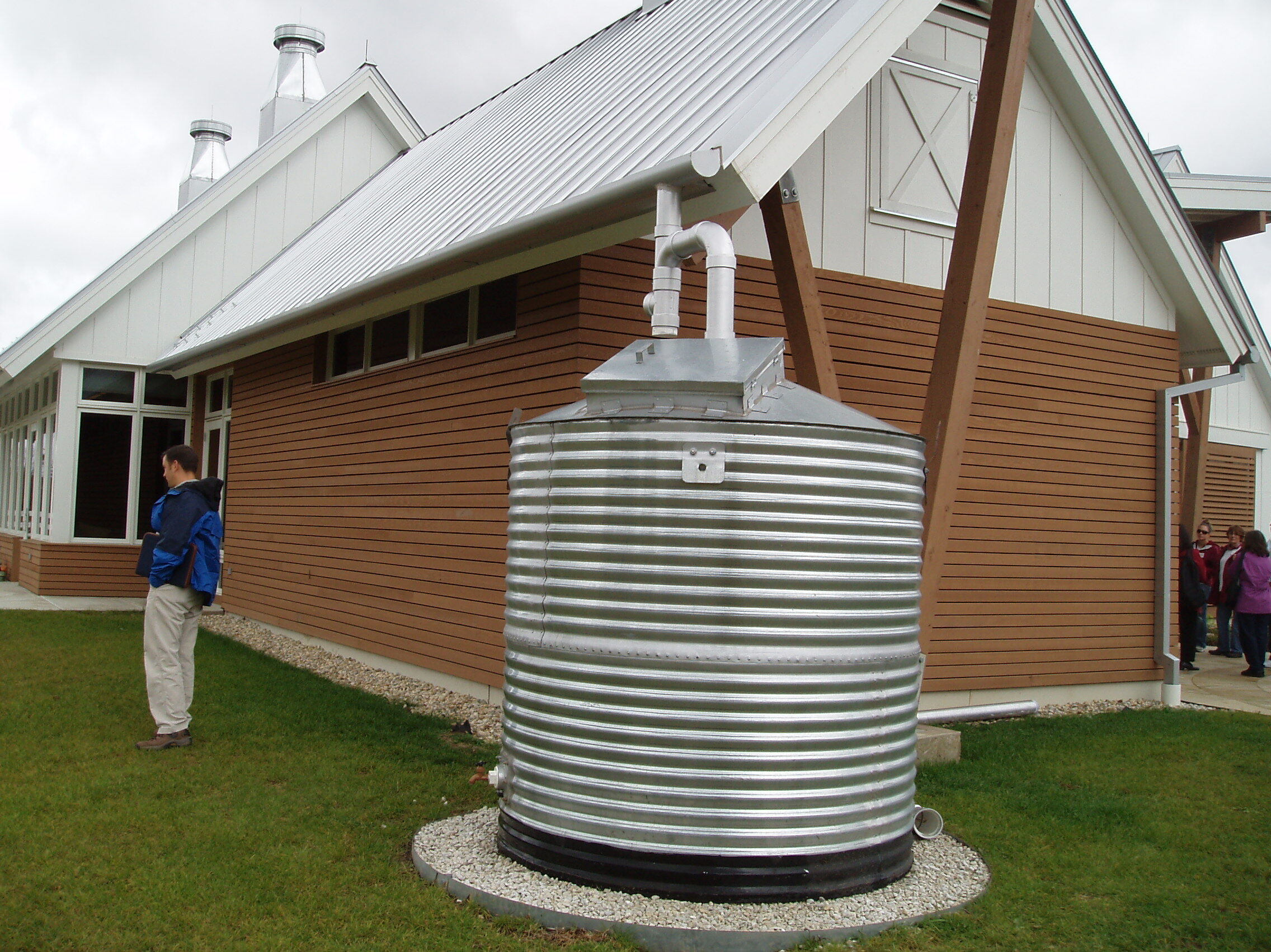Plant-Life and Water Retention
Capture Stormwater for Re-use or Re-infiltration
What Is It?

Lake County, IL
A 1,000 square foot roof receives approximately 600 gallons of water from 1 inch of rainfall. Rainwater harvesting allows for some of this rainwater to be captured and reused in non-potable applications. Rainwater is captured in barrels (approx. 55 gallon capacity) and cisterns (10,000 gallons or more), which reduces the quantity of stormwater runoff and non-point source pollution. Rainwater storage tanks can be located above ground, underground, or inside building basements. Rainwater that exceeds a harvesting system’s capacity can be diverted to a storm drain as needed. Annual cleaning is necessary to remove biological contaminants that collect in the storage tank. Downspout seals, installed to prevent mosquito breeding in the standing water, should also be inspected periodically.
Rainwater captured in cisterns has limited use. Rainwater can be used for irrigation, though rainwater is slightly acidic (pH 5.6-5.7) and should be used on appropriate vegetation. Rainwater can be used in buildings for toilet flushing or for HVAC processes (e.g. boilers, air conditioning). However, care must be taken to ensure that potable and non-potable water sources are separated and that all plumbing within the building is properly labeled. Successfully reused water can significantly reduce building water use: Atlantic Wharf installed a rainwater harvesting system utilizing a 40,000-gallon storage tank that has, in conjunction with other water conservation efforts, yielded a 63.1% reduction in irrigation-related water use and 15% reduction in process water use compared to similar buildings.
Benefits
- Rainwater capture reduces stormwater runoff and non-point source pollution during storm events
- Reuse of rainwater can reduce building water use and associated costs
- Captured rainwater used for irrigation preserves the hydrological cycle by allowing for groundwater recharge
Drawbacks
- High capital cost; due to initial infrastructure investment, operations and maintenance, and pumping costs, life cycle cost and net present value benefits assessments have shown that rainwater harvesting is not economically viable given present conditions.
- Cisterns placed above ground must be winterized in cold climates, increasing capital cost. Cisterns below placed below ground may require excavation, increasing costs.
Regulatory Impacts and Requirements
Potential regulatory touchpoints in Boston and Massachusetts include:
- Conservation Commission
- MA Department of Environmental Protection
- Boston Water and Sewer Commission
- Boston Groundwater Trust
NEWS
- "Catching Rainwater from the Sky Eases Drought's Grip for Bay Area Innovators," San Jose Mercury News, December 16, 2014
- "Rainwater Harvesting Growing in Popularity," San Antonio Express News, May 29, 2012
RESOURCES
- NAIOP: Atlantic Wharf(case study)
- Contech Engineered Solutions: project profiles here (pg. 9-11)
- Contech Engineered Solutions: Cistern Design Considerations for Large Rainwater Harvesting Systems
- Tahoe Regional Planning Agency: Best Management Practices Handbook, 4.1-e Rain Barrel And Cistern
- University of Florida: Florida Field Guide to Low Impact Development, Cisterns/Rain Barrels


